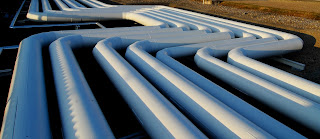Industrial hoses require certain fittings to function correctly, which are commonly ordered alongside the hoses by a wide variety of industries, such as food, manufacturing, medical and more. Both the industrial hoses and their fittings generally provide hydraulic and pneumatic fluid power to their industrial machinery to provide their product or service with as much efficiency as possible. It may interest you to know that a lot of homes are now using industrial hoses and the relevant fittings to build hose assemblies for home heating systems etc.
Whether you are a large company with a number of employees, or a small growing business, you must take into consideration the type of hose that you want to purchase, making sure it is suitable for the job at hand. Materials that are transported by hoses are generally air, gas, fuel, materials requiring a temperature control, chemical and medical. The fittings required could vary from steel aluminium, brass and black pipe. To figure out which fitting is required for which hose, it is essential to take note of certain facts.
You need to research the types of fittings that are available, such as bulkhead fittings, caps compression fittings, couplings, adapters, elbows, expansion joints, plugs, offsets and side outlets. Each fitting has its own unique characteristic. For example, an elbow is designed with angles ranging from 30 to 90 degrees, and often changes direction depending on their original angle.
The materials used to create the industrial hoses are generally varying metals and plastics. The metals range from aluminium, stainless steel, bronze or brass, with the various plastics ranging from a variety of polymers and nylon. Aluminium is incredibly lightweight and possesses the ideal characteristics for transporting thermal and electrical conductivity. However, brass has the ability to resist corrosion, and stainless steel is resistant to harsher chemicals.
The high performance of each individual material is relevant to the industry and the hose required for transporting each individual material, whether it be gas, liquid or solid. Whatever industry you work in, make sure you consider every aspect of industrial hoses and their fittings.

Comments
Post a Comment